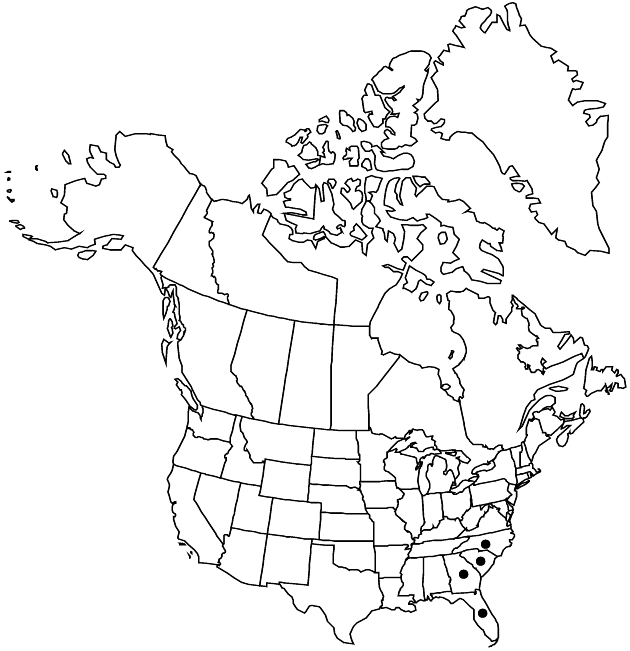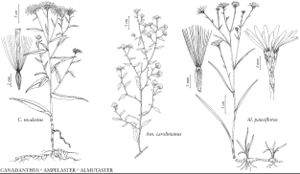Difference between revisions of "Ampelaster carolinianus"
Phytologia 77: 250. 1995.
FNA>Volume Importer |
FNA>Volume Importer |
(No difference)
| |
Revision as of 18:39, 24 September 2019
Plants deciduous to evergreen by production of new growth, sprawling, climbing over other plants. Stems weak, 5–10 mm diam., branches at right angles. Leaf blades 30–70 × 10–15(–20) mm, reduced distally, membranous, bases auriculate-clasping, apices acuminate. Heads 1–15 per branch. Peduncles 1–4 cm, densely pilose; bracts lanceolate to ovate, 3–10 mm. Ray florets: laminae 9–15(–20) × 1–1.6 mm; style-branch appendages narrowly triangular. Disc florets corollas 6–8 mm, limbs 50–60% corollas, lobes 0.6–1.1 mm, 10–20% corollas. Cypselae usually tan to brown, sometimes mottled purple to black between light colored ribs, 3.5–4.3 mm; pappi shorter than disc corollas. 2n = 18.
Phenology: Flowering peak late fall–winter, year round (Fla).
Habitat: Marshy shores, stream banks, edges of swamps and moist thickets, wet woodlands
Elevation: 0–30 m
Distribution

Fla., Ga., N.C., S.C.
Discussion
Ampelaster carolinianus grows on the outer coastal plain. It is possibly extirpated in North Carolina.
Selected References
None.
